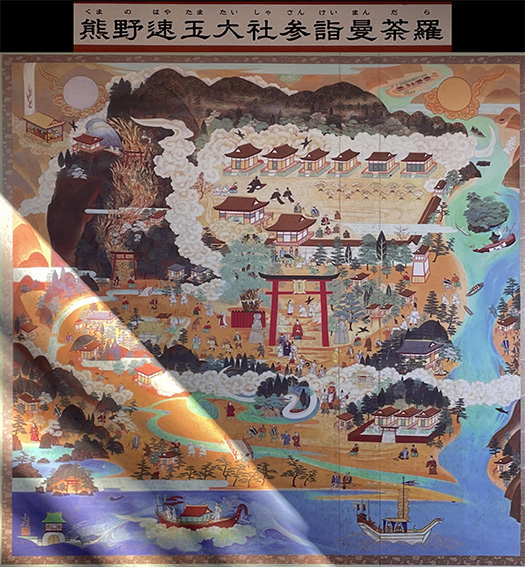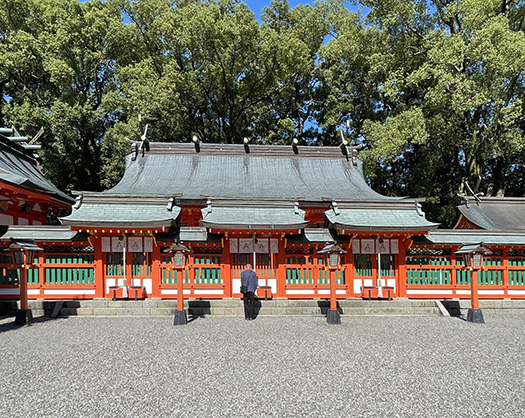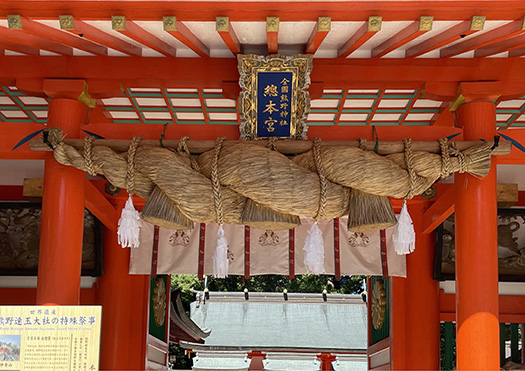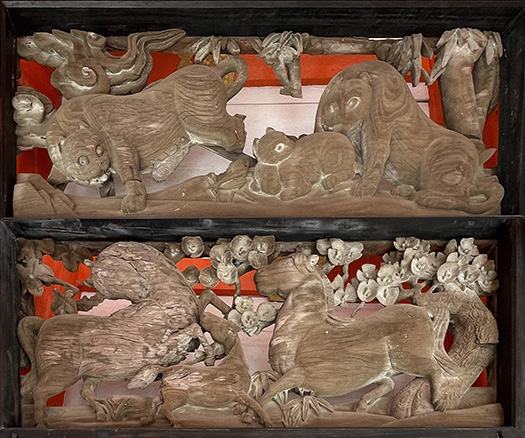

日本史の中の経済的・軍事的勢力として「水軍」という存在は大きい。東アジアの漢字文化圏における伝統的な水上兵力の呼称。西洋・近代の軍事における海軍に相当するが東洋の水軍においては河川や湖沼における水上兵力の比重も大きい。水師、船師、舟師ともいう。海上・水上交通を支配してさまざまな経済利権について掌握する機能性を持った組織体といえるだろう。
紀州方面に於いては別当氏に代表される「熊野水軍」が代表格であり、治承・寿永の乱に於いては湛増などが壇ノ浦などで活躍している。湛増は平安時代末期から鎌倉時代初期にかけて活躍した熊野三山の社僧で21代熊野別当。別当とはそもそも律令制度で「官司」の職務全体を統括・監督する地位に就いた時に補任される地位とされる。その職制がやがて「苗字」として名乗られるようにもなる。宗教勢力による軍事力であり、陸戦での「僧兵」と対比される。これらは後には「九鬼水軍」へと引き継がれていく。
上の「熊野速玉大社参詣曼荼羅」は境内にあった板画ですが、活発な「海上・水上交易」の様子が描かれていて、それによって地域の独自勢力として日本史の中で存在感を示し続けていたことがわかる。
紀ノ川は現在の和歌山市周辺で大阪・堺との関係性、強く中央と結びついた存在だが、この熊野は紀伊半島の熊野灘地域全域を支配する非常に独立性の高い地域だったことが容易に想像できる。宗教的権威として朝廷の尊崇が篤く、そして社僧自身が海上軍事戦力の首領を担うという独立権力の姿が浮かび上がってくる。
戦国期、こういった熊野の独立性の高さに対して天下布武・中央集権体制を志向した信長も軍事侵攻し、秀吉の代では実弟・秀長の家臣筆頭、藤堂高虎が1589年(天正17年)頃、一揆鎮圧拠点として「赤木城」を築いている。これは紀州の豊富な森林資源を管理しつつ、熊野の宗教勢力を鎮圧しようとしたもの。
江戸期には紀州の豊富な木材資源での投機的交易で紀伊國屋が財を成すけれど、そもそも木材出荷こそが熊野地域の経済力の源泉なのだともいえる。その「水運」がいかに重要かは自明だろう。
一枚の絵から、さまざまな情報が喚起されてくる。



わたしの家系伝承のなかに「往昔紀州にて仕官したるところ」という記述をしてくれたご先祖様がいて、そのかすかな手掛かりから、なんとかこの地方のことを調べてみたくなったのだけれど、北海道とは2000kmを超える非常な遠隔地で困難に直面していたけれど、それが今回の熊野探索の強い動機になっている。
日本民俗としても非常に存在感が大きな地域であるということがわかって、日本史の理解に奥行きが広がってきたように思えて感謝している。明日からはふたたび神武東征の跡をたどってみたい。
English version⬇
Hayatama-taisha, the Keystone of the Sea and Rivers: A Journey to Kumano and the Myth of the Imperial Family – 29
The location of Kumano Hayatama-taisha, which suppresses the mouth of the Kumano River to the Pacific Ocean. A religious force with naval and military power in contrast to the land-based “priestly army”. …
The “navy” is a significant economic and military force in Japanese history. This is the traditional name for waterborne forces in the Kanji cultural sphere of East Asia. It corresponds to the navy in Western and modern military affairs, but in the Eastern navy, the waterborne forces on rivers and lakes also play a significant role. Also called water masters, ship masters, and boat masters. It can be said to be an organization with the function of controlling maritime and waterway traffic and seizing various economic interests.
In the Kishu area, the Kumano Suigun, represented by the Betsudo clan, is a representative example, and Tanmaso and others were active at Dannoura and other locations during the Jisho and Juei Disturbances. Tanmasu was the 21st Betsudo of Kumano, a priest of Kumano Sanzan who was active from the end of the Heian Period to the beginning of the Kamakura Period. Betsudo is a position that is considered to be a supplementary position when a “kanshi” (government official) assumes the position of overseeing and supervising the overall duties of a “kanshi” under the Ritsuryo (law) system. This position eventually became known as “surname. The “kuuki” were the military forces of the religious powers, and were contrasted with the “priests” of the land warfare. These were later succeeded by the “Kuki Suigun” (navy).
The “Kumano Hayatama-taisha Pilgrimage Mandala” above is a board painting that was found in the precincts of the shrine. It depicts active “maritime and waterborne trade,” which shows that they continued to show their presence in Japanese history as a unique regional power.
While the Kino River has a relationship with Osaka and Sakai in the area around present-day Wakayama City and is strongly connected to the center of the country, it is easy to imagine that this Kumano was a very independent region that controlled the entire Kumano-nada region of the Kii Peninsula. The Kumano shrine was revered by the imperial court as a religious authority, and the priests themselves were the heads of the maritime military force, which reveals an independent power.
In the Warring States period, Nobunaga, who was aiming for a centralized power system under the Emperor, made a military invasion against Kumano’s high level of independence, and around 1589, Hideyoshi’s brother, Takatora Todo, the first vassal of Hideyoshi, built Akagi Castle as a base for suppressing revolts. This was an attempt to suppress religious forces in Kumano while managing the abundant forest resources of Kishu.
During the Edo period, Kinokuniya made a fortune through speculative trading in Kishu’s abundant timber resources, but it can be said that timber shipments were the source of the economic power of the Kumano region in the first place. The importance of “water transportation” should be obvious.
A single picture evokes a variety of information.
I have an ancestor who wrote in my family tradition that he served in Kishu in ancient times, and from this faint clue, I wanted to do some research on this region, but I was facing difficulties because it is very remote, over 2000 km from Hokkaido, but this was a strong motivation for this Kumano This was a strong motivation for my exploration of Kumano.
I am grateful to have learned that Kumano is a region with a large presence in Japanese folklore, which has broadened the depth of my understanding of Japanese history. Starting tomorrow, I would like to trace the trail of the Jinmu expedition once again.
Posted on 2月 2nd, 2024 by 三木 奎吾
Filed under: 日本社会・文化研究







コメントを投稿
「※誹謗中傷や、悪意のある書き込み、営利目的などのコメントを防ぐために、投稿された全てのコメントは一時的に保留されますのでご了承ください。」
You must be logged in to post a comment.